If you want to learn more about storytelling, you’re in luck! I will teach you how to write the story of your dreams. Make sure to grab some paper and a pen so that you can take notes.
First of all, there is no wrong way to make stories. Every author has their own method on what they believe is the best. Some people believe you don’t have to plan ahead. They claim ideas will come naturally as you start typing on a computer right away.
Other individuals believe a story has to be fully fleshed out from the start. You would need to know details such as the setting and its history, the characters’ personalities, the characters’ backstories, and the overarching plot. Then you can write afterwards.
Like I mentioned earlier, there is no wrong way to compose a story. The important thing to remember is to find ways which can work for you. Every person is different, so you can use how you learn new information to your advantage.
I’m pretty excited about this topic because I’ve been creating stories for most of my life. I want to show you that scripting plots and narratives can be really fun to do. This process requires some hard work, but you will feel proud after you learn how to write the story of your dreams.
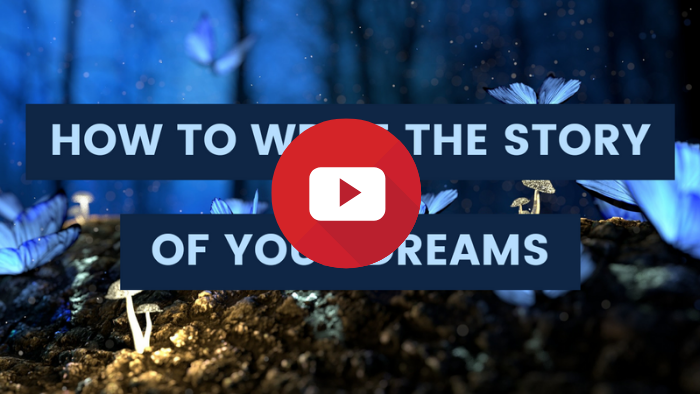

1. Write your ideas down
For my first tip on how to write the story of your dreams, you can simply write your ideas down. This can be in a notebook, your personal journal, your phone, or an online document on a computer. No matter where you list your ideas, it needs to be in a place where you can access it easily and daily.
If you are struggling with even thinking of ideas, I recommend sitting down in a quiet place so that you can contemplate in peace. Reflect on your life experiences. Make a list of books you enjoyed reading. Think back to people who are memorable and taught you life lessons. Ponder any movies or TV shows with great storytelling.
To further conjure up more ideas, you can ask yourself questions such as:
- What are my favorite books that I read?
- What are some great movies that I watched?
- Are there any life lessons which impacted me?
- Is there anyone in my life whom I had a significant experience with?
- What kind of story would I like to see in the future?
Take your time so that you can brainstorm properly. After you gather suggestions, write your ideas down immediately. Don’t worry about rearranging the events in order. Don’t worry about making a plot just yet. Don’t worry if your handwriting looks like chicken scratch. Don’t worry about spelling the words properly if you’re typing them out.
The key is to get those ideas down on paper. If you don’t physically script, it becomes extremely difficult to write the story of your dreams. From a psychological standpoint, not writing your ideas down is equivalent to not taking action. How are you going to accomplish a goal if you choose not to do anything about it?
Throughout my life, I met many people who have great ideas. They told me their ideas for books they want to write, fanfictions that would make anyone’s heart sing, or engrossing comics they want to create. Some of the plots I’ve heard are actually genius and have the potential to make these people a lot of money if they ever released a publication.
However, even if you have an amazing million-dollar idea, it will never become a reality unless you implement action. This applies not only in storytelling and creative writing, but for anything substantial in life. Everyone has the potential to achieve their goals. Unfortunately, many people choose to ignore challenges because they don’t want to work for their desires.
In my opinion, a short story may be easier for people to write. But the fact remains that an entire book is tremendously harder to compose. Whether you want to write a short or long novel, both paths require hard work, focus, and dedication.
One of the most important tips is to start writing stuff down.
Here is a write your ideas down example to help you out:
Let’s say I want to write a story about a basketball player. After I think of a vague concept, I breathe life into my idea by jotting down some details.
- This is my main character named Benji.
- He is a basketball player.
- His girlfriend broke up with him because he focused too much on sports and neglected her.
- Now he is lost without her because he has always loved her.
- He finds out she is now dating his rival.
- Now Benji has a goal to beat his rival in the next game, and he’s going to try to win his girlfriend back.
- He also realizes that his ex wasn’t very supportive of his dream to play pro, so he isn’t so sure about getting back together with her.
That’s just something I made up from the top of my head.
As you can see, writing your ideas down gives you a sense of what your story will be like. If you’d like to get started, use the next 10 minutes to generate ideas into your journal or in an online app on your phone or computer. Just write to your heart’s content!
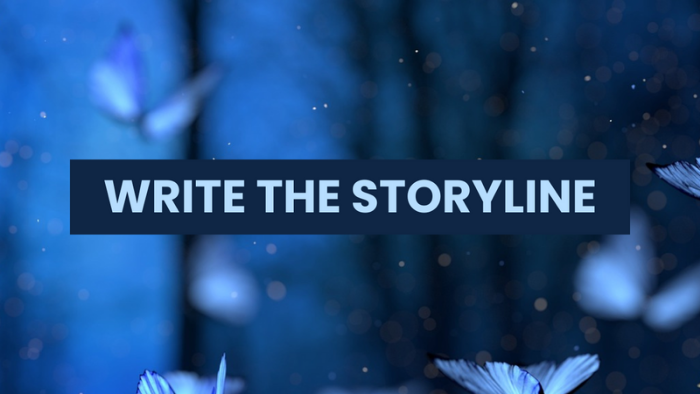
2. Write the storyline
My second tip on how to write the story of your dreams is to write the storyline. When I first typed this blog post, I looked up what a storyline means online. Of course, I knew what the word is since I’ve been creating stories for many years. But I still wanted to see what the technical definition is.
Google defines a storyline as “the plot of a novel, play, movie, or other narrative form.”
That is correct. However, I discovered another interesting fact. While many writers (along with myself) do agree with Google’s simplified meaning, anyone who regularly creates stories often has their own style of making a storyline.
So what do I mean by this?
Some people who make storylines for a book they want to write will condense the plot into one full page. Others create entire manuscripts and call that their storyline. There are those who use tools and questionnaires online in order to clarify key elements of their story.
The techniques I mentioned above do work, but it also depends on how the individual approaches storyline writing. Just because one author writes a rough draft of a novel right off the bat does not mean it will work for someone else who writes only one page.
I’ve taken creative writing classes and met fellow writers in the past. When we collaborated together or critiqued each other’s work, I noticed a common theme. Other people had trouble explaining what their story is actually about. They talked about certain events like how a character becomes a cop or how the main character is addicted to drugs.
To me, those are just details. If a character becomes a cop, is the storyline about the character’s journey toward a new occupation? Or is the job a minor element and the story is supposed to be about something else?
It also doesn’t tell me anything when someone once said to me that their main character is addicted to drugs. That alone is only one small piece of the story. Why is the character addicted to drugs? Does the character want to recover and start a new lifestyle?
If these elements cannot connect with each other and don’t make any sense, then there is no story. If the author doesn’t know what their story is about, how is anyone else going to know?
For most people who don’t have experience in storytelling, they will initially have trouble writing the storyline in a few short paragraphs. I’ve been through this, and it’s normal to feel this way.
One thing I learned is that it’s better for a storyline to be in one sentence.
Yes, one sentence. This might sound crazy to some people because there is a lot of information, and they think that one sentence is not enough to define a story. Everyone has their own opinion and whatever works for them. I’m just sharing what worked for me.
In my perspective, defining a storyline in one sentence forces you to think about what the overall plot is. A story that tries to have more than one main focus makes it confusing for the reader. I personally feel that if you cannot describe your story in one sentence, then you most likely don’t know what the plot is about.
I’m not saying you cannot combine more than one genre together. It’s okay to combine elements that traditionally would not go together and let the side characters have their own adventures. The key is to have a primary focus. Other storylines are secondary and should still support the primary storyline.
I will give a couple examples from the details I shared earlier.
The main character who becomes a cop could be replaced with:
- Maya, a trainee at the Four Star Academy, is on a challenging journey to become a cop because her rival Santiago constantly sabotages her.
As for the main character who is addicted to drugs, it can be rewritten as:
- Jun, a seventeen-year old teenager, has been addicted to drugs for the past few years but decided to go to rehab after his best friend, Chang, died of an overdose.
Can you see how I transformed those vague details into clear storylines?
So continuing on with what I wrote about Benji’s story.
My storyline would be this:
- Benji, a rising basketball star, wants to better his life by becoming a pro-league player and figuring out what to do in his love life.
My original storyline that I filmed in my video was:
- Benji decides whether to win his ex-girlfriend back or follow his heart.
Even if other people interpret the story as Benji trying to win his ex-girlfriend back, there should be enough events to show that the story is actually about Benji overcoming his internal struggle and external conflicts. Benji has two goals. The first objective is that he wants to be a pro-league player; however, he constantly butts heads with his rival. The second one is whether or not he should try to win his ex back or move on to someone new.
If you want more tips on how to write the storyline, click on the button to read my blog post. They can be tough to create, but my article is packed with information to help you out. Enjoy!
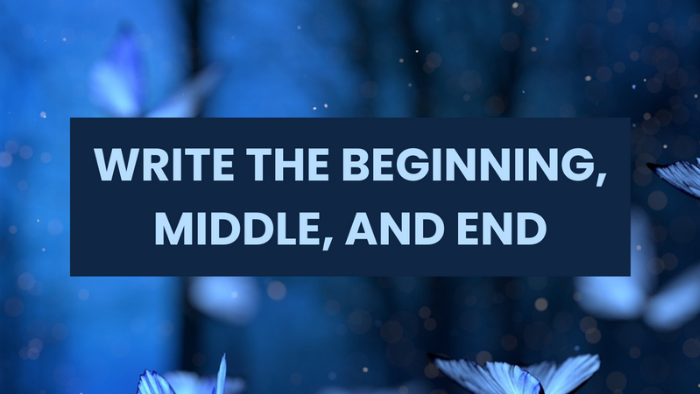
3. Write the beginning, middle, and end
For my final tip on how to write the story of your dreams, you have to write the beginning, middle, and end. This is where you flesh out the details of your plot, bringing it to life.
The beginning (aka the exposition) consists of the opening scenes which get the story started. You introduce the main character and describe the setting. You may even provide hints as to what your main character’s purpose is.
In some books, the author explains a prelude before they dive into their story’s present timeline. Google defines a prelude as “an action or event serving as an introduction to something more important.”
If you need help writing the exposition, I prepared this list of questions for you to answer:
- Who is your main character?
- What does your main character do? Are they a student or are they working?
- How old is your main character? Is age relevant to the plot?
- What is your character’s ethnicity and cultural background?
- Are there other characters you need to introduce in the beginning too?
- What is the setting of the story? Include the time period and place.
- Are there any conflicts you can mention from the beginning?
Answering questions such as these will set up your story, as well as clarifying more of the plot. From personal experience, sometimes a plot is difficult to flesh out from the beginning. In that case, you can focus more on defining your main character. Who the main character is and why they are important sheds more light on what your story is about.
As an example, let’s continue with my story about Benji. Here are a few main points which occur in the beginning:
- Benji’s girlfriend just dumped him.
- They’ve been together for 5 years.
- One day, he comes to their apartment and finds that her stuff is gone.
Now I will fine-tune more details by answering the list of questions shown earlier.
Who is your main character?
- My main character is Benji.
What does your main character do? Are they a student or are they working?
- Benji is a basketball player and a boyfriend. He is a student in college who wants to play in the Pro Leagues someday. He also loves his girlfriend Marnie.
How old is your main character? Is age relevant to the plot?
- Benji is 23. His age is relevant because many people around that age are in college. People in their 20s focus on discovering who they want to be, as well as figuring out what to do for the next stage of their life. While Benji knows he wants to be a Pro League player, his love life becomes unclear after Marnie leaves him.
What is your character’s ethnicity and cultural background?
- Benji is both Mexican and Caucasian. He was born in the US. Benji’s parents have been together in a long-term marriage for the past 30 years. Witnessing the longevity and success of his parents’ marriage influences Benji to be committed to his relationship to Marnie.
Are there other characters you need to introduce in the beginning too?
- Marnie, Benji’s girlfriend, is introduced in the exposition. The fallout with her is one of the main conflicts in the plot.
What is the setting of the story? Include the time period and place.
- The time period is 2018. It takes place at Riverwood University, which is a made-up college in the US. The year is significant because it’s in the modern era where technology is advancing, and more young people are following their dreams shamelessly.
Are there any conflicts you can mention from the beginning?
- Marnie, who is Benji’s girlfriend, dumps Benji after being together for 5 years. Benji comes home late to their apartment after winning a game and sees that all of Marnie’s stuff is gone. He is shocked and mortified, so he calls Marnie. She doesn’t pick up, but Benji finds a breakup letter from Marnie on the kitchen counter. Benji sinks to the floor in despair.
Bam, that’s the beginning of my story. Once you get started on the exposition, it becomes a lot easier for the rest of the details to flow.
As for the middle of the story, this is where your character goes on his or her adventure. It connects the beginning and the end of the story together. People usually consider the middle as the hardest section because they struggle thinking of what to write.
Honestly, perseverance is required to overcome this section. Anyone is capable of writing the middle, but this segment is longer compared to the beginning and end.
There is no one way to write out the middle. However, you can work on developing the main character’s growth and any significant conflicts vital to the plot. The main character tends to be a dynamic character, a person who evolves throughout the story. Think about what types of events you can plant in your story that influence or force the main character to change.
Here are five questions you can answer to help you write the middle section:
- What type of personality does the main character have?
- How does the main character handle conflict?
- Why are the other characters significant in your story?
- What roles do the other characters play?
- What events and conflicts cause your main character to change?
Take your time when you fill out these questions. Feel free to add any suitable details as you continue working on the middle of your dream story.
Moving on with my story about Benji, here is a list of events which belong in the middle:
- Benji has a rival named Rai, who is also his team’s biggest opponent.
- He has seen Rai play in the park, and Benji is intimidated by Rai’s skills.
- Benji also sees his ex-girlfriend Marnie kiss Rai in the park, and he is outraged.
- Benji goes to a bar to drink his sorrows away and try to forget about what happened.
- Then a woman his age sits a few seats away and tells him to stop drinking since it’s getting out of hand.
- This new woman is Lyra.
- Benji opens up to her about his breakup.
- Lyra tells him that although he should have been more attentive, it also seems like Marnie didn’t really support his dreams.
- Benji still has feelings for Marnie but he also is thinking about and doubting their past relationship throughout the story.
As for the end of your story, this is when you create a solid and meaningful conclusion. It may be kind of sad to think about because for many people when they have fun in a project, they don’t want to stop. At the same time, a good beginning has to be paired with a good ending.
You can use this set of questions in order to write out the ending:
- Does the main conflict of the story ever get resolved?
- If the conflict is resolved, what is the conclusion?
- How is the main character a different person in the ending?
- What does the character and/or supporting characters do with their lives?
What I suggest is to read everything you’ve written down in regards to the beginning and middle so far. The end of the story of your dreams can play out in various scenarios. However, reviewing the information will help you think of endings that will make sense. After you think of a few solid conclusions, take your time and figure out which ending is the best one for your story.
As a final example, here is a list of events which complete my story about Benji:
- Benji decides to not get back together with Marnie.
- He focuses on basketball because he finally got accepted into the pro leagues.
- He also decides to fully pursue his budding relationship with his new friend Lyra.
- Benji learned that he must follow his dreams of being a great basketball player because that’s a part of who is.
- He also learned that he must be committed and attentive as a boyfriend, especially for his next relationship.
I hope this article helps you with your writing journey. Don’t forget that with patience, commitment, and these tips in mind, you can definitely write your dream story!
Thank you for reading How to write the story of your dreams! I hope you enjoyed it! 💜
Comment down below and let me know what you’re dreaming of writing about. I want to hear about the cool stories you come up with.
If you are interested in joining the Nikkaflora fam for this journey, scroll down this page, sign up for my weekly newsletter, and follow me on my social media.
You’ll stay updated on what’s new, receive more personal growth and creativity content, and we’ll have even more fun. See you there!
Until then, let’s create, appreciate, and f*** that hate! Bye guys!



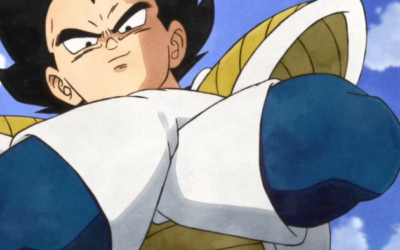
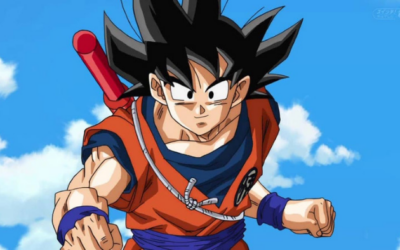
0 Comments